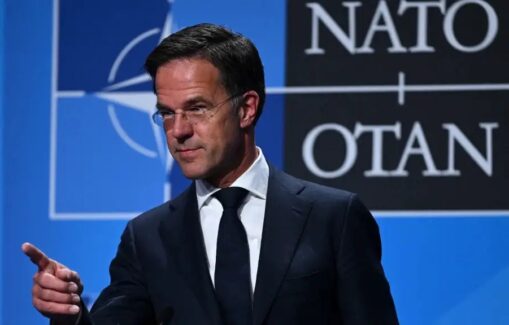October 2024
New NATO Secretary General: Key priorities to help safeguard European security
Region: Europe
Author: Sally A. Painter
In October of this year, former Dutch Prime Minister Mark Rutte became the 14th Secretary General of NATO.
In October of this year, former Dutch Prime Minister Mark Rutte became the 14th Secretary General of NATO. Rutte is seen as a consensus builder and coalition maker, having governed with a broad range of political parties during his term as prime minister.
As NATO Secretary General, Rutte faces significant challenges. Externally, there is a revisionist Russia and an assertive China. Internally, there are challenges to democracy within the alliance and depleted military supplies. The alliance has just undergone a period of transformation and developed new regional plans through a new force model, which still needs to be adequately resourced.
Rutte needs to prioritize the following issues to help safeguard European security:
1) First is to maintain U.S. support and increase European support for Ukraine.
There are limited options to end the war and there are no guarantees that President Putin would uphold his end of any kind of negotiated peace deal. In the currently unlikely event of a Ukrainian victory, Putin would continue to harass not only Ukraine but also other countries in its immediate neighborhood, with Moldova especially at risk. He would also likely directly test the territorial integrity of NATO states such as the Baltics. And the cost of a Russian victory to Europe is inconceivable.
Given this dynamic, Secretary General Rutte must find ways to further increase military support for Ukraine. The challenge in the U.S. is two-fold. First is the risk of a second Trump presidency and the possibility that Trump will try to force Ukraine to capitulate to Russia. He may try and find friends in the governments of Hungary, Italy, and the Netherlands, among others, who are also skeptical of support for Ukraine and close to Russia, in Hungary’s case – making the challenge all the greater for Rutte.
2) Second is a Harris presidency and a White House that wants to continue support for Ukraine but is unable to pass aid packages through a divided Congress.
In either scenario, voices calling for the war to end may become louder and this is already gaining traction in some European capitals.
Some initiatives have tried to blunt the impact of the U.S. election outcome. The creation of the NATO Security Assistance and Training for Ukraine (NSATU), which coordinates weapon deliveries, training programs, and the future development of Ukrainian armed forces, was designed to lower the impact of a Trump White House.
3) Third is to keep the United States engaged in Europe while the Europeans strengthen their own defenses.
While clearly the prospects for U.S. engagement in Europe are better under a Harris presidency than a Trump presidency, there is a bipartisan focus on China which could see U.S. resources diverted away from Europe over the long term. Rutte will need to balance supporting continued U.S. engagement with Europe, while pushing NATO allies to increase their own defense spending.
4) Finally, implement the new force model.
Ensuring that our European allies are able and equipped to defend Europe continues to be a major policy challenge. In 2020, NATO agreed to a new framework known as the Concept for the Defense and Deterrence of the Euro-Atlantic Area (DDA), which paved the way for the adoption of a new NATO Force.
Ultimately, these plans underpin NATO’s credibility when it comes to defense and deterring adversaries from engaging in its area of operations. However, without adequate staffing and resources, NATO’s credibility could be questioned, putting allies at risk. Major gaps exist, including air defense of the eastern flank. The NATO defense planning process – where allies set capability targets stemming from the regional plans – is ongoing, but not likely to conclude until autumn 2025.
Further complicating this dynamic is the weakness of EU-NATO cooperation. As the EU increasingly pushes into defense and NATO moves into areas of resilience and civil defense – where the EU has traditionally had more expertise – the need for better cooperation is evident.
EU funding mechanisms, such as the European Defence Fund (EDF), could be used to close NATO capability gaps among EU member states.
Getting these priorities right is key to NATO’s future success.
